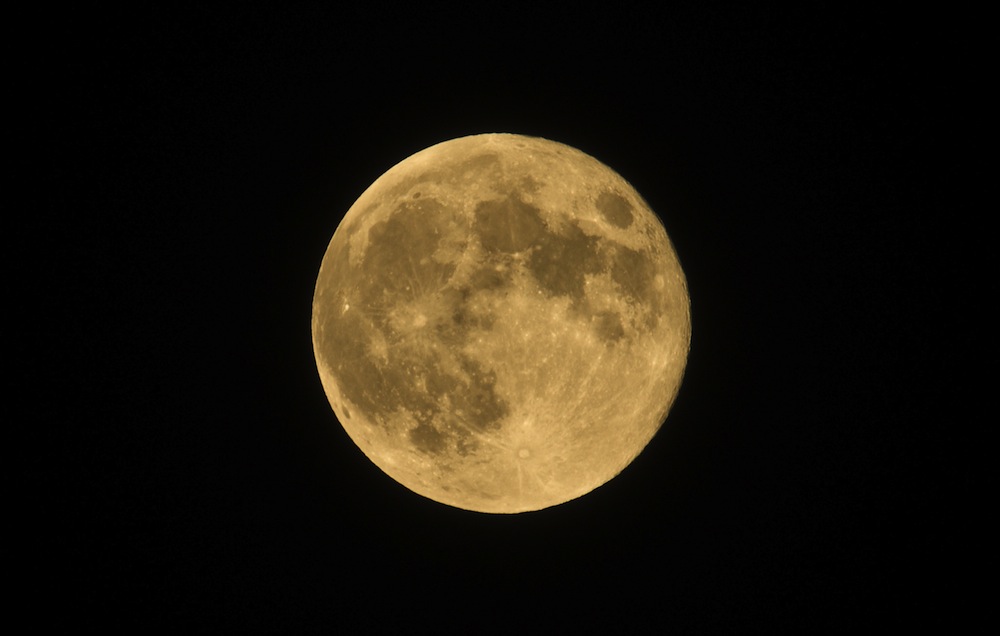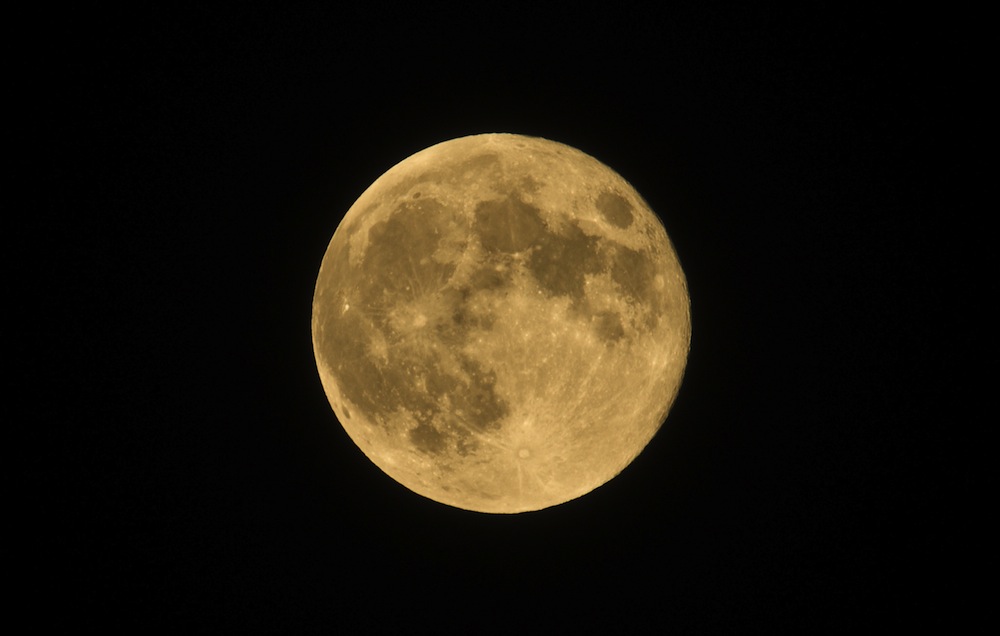
In the first of a two-part feature, our wildlife expert Ed Andrews goes on a night-time ramble in the Shropshire Hills.
It’s a clear July evening as I climb the Burway; the rain that fell earlier has now cleared, and the flank of Caer Caradoc is bathed in the orange glow of a fiery sunset. I make my way up the track through bilberry and bracken, emerging at the rocky summit. I pause to get my breath back and admire the vista. Swifts are dancing overhead with their distinctive sickle-shaped dark wings. They swoop up the side of the hill and pass low over my head with a rush of air. There is not a breath of wind over these ancient hills.
A milky moon
With the sunlight reduced to an afterglow behind the Long Mynd, I watch the full moon rising from behind Brown Clee. It’s shrouded in cloud and looks almost ethereal, like an image that forms in your head when you are in that hazy place just before sleep. On the rare occasion that two full moons fall within one calendar month, the second is known as a blue moon; this last July was a blue moon month.
I suddenly spot a solitary noctule bat feeding alongside the swifts. We have 18 species of bat in the UK and the noctule is the largest, with a wingspan of around 400mm. For a few minutes, the bat shares the airspace with the swifts, feasting on the flying insects.
Darkness is creeping out across the Shropshire Hills but the blue moon still casts its milky glow. As I make my way back down the Townbrook valley, the moon disappears behind a hill and the rocky path is plunged into darkness, forcing me to turn on my head torch. Once at the bottom of the valley, I see the moon reappear. For a magical moment I find myself standing next to a babbling brook with moonlight twinkling from the surface of the water like a shattered mirror. Some people say that the light from a full moon has healing properties; a tonic to re-balance our cluttered minds… and at this moment I feel something of its power.
Lighting up the night
As most nocturnal wildlife is hidden by the veil of darkness, a night walk is full of strange sounds and, without our eyes to rely on, our hearing becomes that bit more sensitive. One nocturnal creature that does however advertise its presence visually, and in a spectacular way, is the glow worm.
The first time I saw a glow worm, I thought the illuminous green light must be a float discarded by a fisherman. The level of light emitted has to be seen to be believed. Glow worms are actually a type of beetle… and it’s the female that glows. She is wingless, so lives a fairly sedentary life. The male has wings and is attracted by the female’s alluring light. Once mating has taken place, the female loses her glow. The glow worm larva is quite a vicious predator – it feeds on snails and has very sharp mouthparts, and it injects a poison into its prey to paralyse it. Glow worms favour stony substrates and sparse vegetation, and a good place to spot them in Shropshire is alongside old railway lines.
Ode to the glow worn
One of the most famous early naturalists was Gilbert White of Selborne. He was fascinated by glow worms and mentions them in his poem ‘The Naturalist’s Summer Evening Walk’:
In the second part of this feature, I will explain how a recently-acquired gadget has revolutionised my enjoyment of nocturnal wildlife. For more wildlife tips and inspiration in the meantime, check out my new blog at:
https://shropshirewildinspired.wordpress.com/
You can also follow me on Twitter @shropshirewild
Do one thing for wildlife this month…
Bats depend on flying insects for food: it’s estimated that one bat can eat up to 3,000 midges in a night. In 2004, the RSPB invited people to get involved with the Big Bug Survey, distributing sticky ‘splat-o-metres’ to capture invertebrates that collided with the car. The results showed an alarmingly low number of insects, caused in part by the increased use of pesticides in gardens and the wider countryside. Make September the month you review the use of chemicals in your garden and, where possible, switch to an organic alternative (such as soap spray for greenfly).






